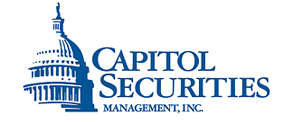By: Kent Engelke | Capitol Securities
Hiring picked up in June as payrolls increased about 25% more than expected. Moreover, job growth in both April and May was revised higher. The labor participation rate did increase 0.1%, thus suggesting workers are reentering the workforce, thus causing an insignificant increase in the unemployment rate and the more inclusive U-6 unemployment rate. Wage growth, however, was nominally lower than expected. However there is continued pressure at both ends of the proverbial spectrum.
Thirty-five years ago, economists were stymied about why large increases in wages were occurring even with double digit unemployment, a direct contradiction of the Phillips Curve. This theory states high unemployment will dictate low wage growth and vice versa.
Fast forward to today, according to the Phillips Curve, wages should be surging given the historically low unemployment rate.
I would argue the reason for lack of wages is the near 40-year low of the labor participation rate (LPR), which suggests a very large pool of potential workers. The LPR in the late 1970s was about 3% higher than today, albeit it was not at the levels achieved 15 years ago.
Writing rhetorically, perhaps we are experiencing the other end of the proverbial curve that should not occur, statistically low unemployment and inflation.
Commenting about the G-20 meeting, China is now the largest supporter of global trade. In my view, the reason for this stance is obvious. China is an export-dominated country defined as if exports slow, so does the Chinese economy. Countries that depend upon exports for growth and production are at an inherent disadvantage given that some of its economic sovereignty has been surrendered to the end user of its products.
This week is also the commencement of second quarter earnings season. Consensus is expecting a 7.4% increase over a year earlier. As noted earlier, there has been a dearth of profit warnings, thus resulting in the smallest decline in profit expectations since 2011.
How will the results be interpreted? According to Bloomberg, the swing in the NASDAQ has averaged almost 1% a day since June 9, pushing its 30-day volatility relative to the rest of the market, to the highest since 2002.
Bloomberg also writes the average stock in the NASDAQ 100 is down 12% from its 52-week high while 15% are in bear market territory, defined as a decline of 20% or more.
The NASDAQ 100 is composed of the largest companies in the NASDAQ and I believe this data is strong evidence of the myopicy of the markets.
This week’s economic calendar is focused upon inflation data, retail sales, trade and the Beige Book.
Last night the foreign markets were mixed. London was down 0.03%, Paris was up 0.20% and Frankfurt was up 0.39%. China was down 0.17%, Japan was up 0.76% and Hang Sang was up 0.63%.
The Dow should open flat. The 10-year is up 7/32, to yield 2.37%.
















